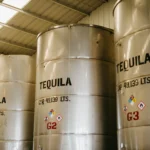Differences between On Trade and Off Trade channels

Additives in tequila / tequila additive free
March 5, 2024
What is the commercial plan?
June 21, 2024The terms On Trade and Off Trade describe the different channels of product sales and consumption. These channels present significant differences in terms of purchasing behavior, types of establishments, staff, and marketing strategies.
Differences
Distribution channels are divided into two categories: On Trade and Off Trade. This classification refers to the relationship with consumption at the establishments where the product is offered.
The On Trade channel is characterized by offering products for direct consumption on-site, commonly known as “open bottle,” from spirits in places such as bars, restaurants, and hotels. In these places, customers enjoy an on-site experience, whether socializing with friends and family or alone.
On the other hand, the Off Trade channel refers to distribution that involves only the sale of products without the need for immediate consumption, such as in supermarkets, convenience stores, and self-service retailers. Here, customers purchase products for consumption at a different time or place.
Marketing Strategies in Each Channel
In the On Trade channel, marketing strategies can include tastings, events, and collaborations with establishments to create unique experiences for consumers. These tactics aim to enhance the appeal of on-site consumption and foster customer loyalty through memorable experiences. “Brands are made in the On Trade.”

In the Off Trade channel, marketing strategies typically focus on discounts, point-of-sale promotions, loyalty programs, and merchandising. These actions are designed to encourage purchase and facilitate product selection in the context of the establishment where it is sold.

Differentiating between On Trade and Off Trade channels allows companies to optimize their commercial strategies, improve customer relationships, adapt their logistical operations, and maximize the performance of their products in the market.




